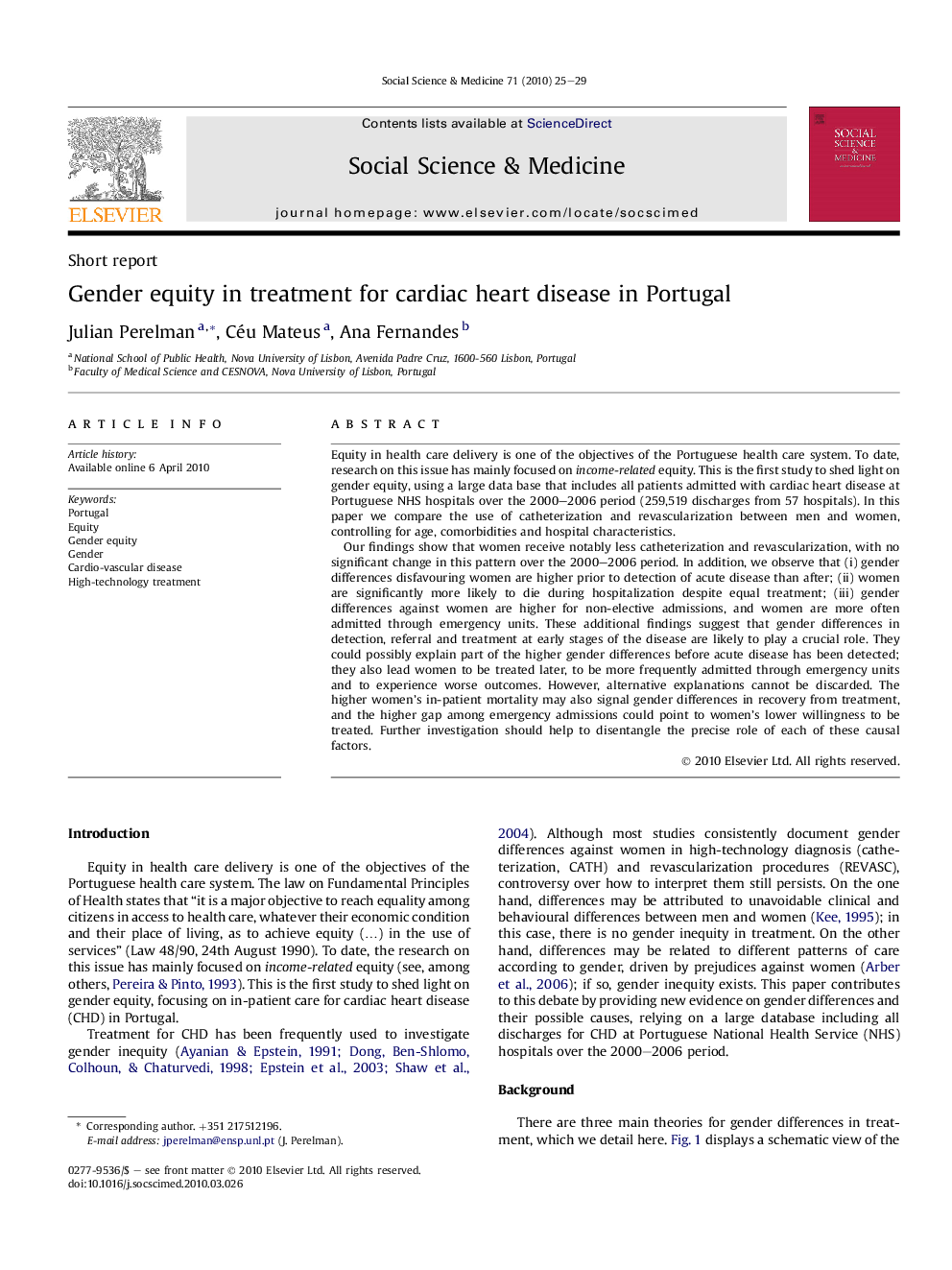| Article ID | Journal | Published Year | Pages | File Type |
|---|---|---|---|---|
| 10471826 | Social Science & Medicine | 2010 | 5 Pages |
Abstract
Our findings show that women receive notably less catheterization and revascularization, with no significant change in this pattern over the 2000-2006 period. In addition, we observe that (i) gender differences disfavouring women are higher prior to detection of acute disease than after; (ii) women are significantly more likely to die during hospitalization despite equal treatment; (iii) gender differences against women are higher for non-elective admissions, and women are more often admitted through emergency units. These additional findings suggest that gender differences in detection, referral and treatment at early stages of the disease are likely to play a crucial role. They could possibly explain part of the higher gender differences before acute disease has been detected; they also lead women to be treated later, to be more frequently admitted through emergency units and to experience worse outcomes. However, alternative explanations cannot be discarded. The higher women's in-patient mortality may also signal gender differences in recovery from treatment, and the higher gap among emergency admissions could point to women's lower willingness to be treated. Further investigation should help to disentangle the precise role of each of these causal factors.
Related Topics
Health Sciences
Medicine and Dentistry
Public Health and Health Policy
Authors
Julian Perelman, Céu Mateus, Ana Fernandes,
